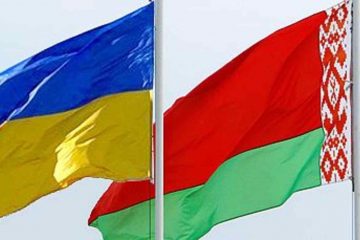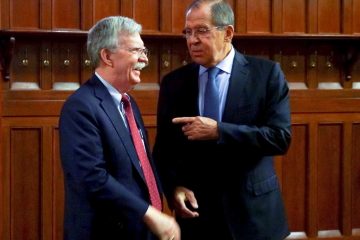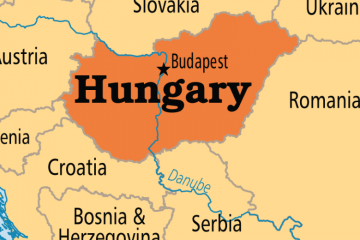By RICK LYMAN
MALI SELMENTSI, Ukraine — The main street is a lovely ribbon of asphalt these days, a far cry from the rutted moonscape that once prevented even buses from bouncing into the tiny, decrepit village.
Lining the narrow road are an equally improbable series of sparkling shops, selling sports clothes, Gucci tank tops, dress shoes, Chanel perfume, flip-flops. There is even a sprawling wedding dress emporium where clusters of excited women contemplate a platoon of mannequins adorned with sequined chiffon and lace.
“It was a small village at the end of the world,” said Monika Mondok, standing outside a two-story emporium selling brand-name sportswear. “But then, when the gate opened, it blossomed.”
The “gate” is a small cluster of glass-and-metal buildings cut seven years ago through the tall fences that mark the border between Ukraine and Slovakia. One pedestrian path leads from the village Mali Selmentsi to its Slovakian counterpart, Velke Slemence, another leads out. Uniformed border guards calmly peruse the travel documents of the bag-wielding shoppers and the decaying remains of a Soviet watchtower pokes above the corrugated tree line.
The saga of this small Ukrainian village (population 200) and its Slovakian twin (population 400), reads like a “Twilight Zone” episode joining the cruelty and absurdity of the 20th century with a most unlikely 21st-century denouement.
Part of the Austro-Hungarian Empire until its collapse at the end of World War I, the two medieval villages had long ago intertwined, sharing a church, community center and schools. In 1919, the combined area was given to Czechoslovakia. In 1938, it became part of the Kingdom of Hungary.
And then, after World War II, with Ukraine absorbed into a surging Soviet empire eager to claim as much territory as possible, a new international boundary was drawn smack through the center of town.
Overnight, families and friends a few blocks apart found themselves living in different countries, separated by surly border guards and, for 61 years, rarely allowed to visit one another. Even talking through the fence was forbidden.
Wedding dresses for sale at a vast shop in Mali Selmentsi, Ukraine. Most consumer goods cost considerably less in Ukraine than in Slovakia.
Mauricio Lima for The New York Times
During funerals, coffins were taken near the border so those on the other side could view the body. Residents outwitted the Russian guards by passing information in songs they sang in the fields. In one oft-repeated incident, a young girl who had been visiting her grandmother was separated from her parents and had to stand near the border fence several years later so her mother could see her in her wedding dress.
Finally, in 2005, after the collapse of the Soviet Union and under pressure from residents and international attention, the Ukrainian and Slovakian governments allowed a pedestrian-only crossing to be cut through the fence.
And then came, perhaps, the strangest twist of all.
Since Slovakia is a member of the European Union, its citizens can travel into Ukraine — which is eager to get closer to Europe — simply by presenting a passport. But citizens of Ukraine must still get a visa, which takes weeks and is, at $38, beyond the means of many.
Priska Tomoriova, left, was with relatives on the Slovakian side when the Soviets built a fence, and she became separated from her mother. In 44 years, she saw her mother only four times.
Mauricio Lima for The New York Times
At the same time, prices for most consumer goods are considerably cheaper in inflation-choked Ukraine. So shoppers from Velke Slemence and other nearby Slovakian towns poured through the new border gate in search of bargains, transforming the little town into something like an outlet center, while Ukrainians faced much greater hurdles to get into Slovakia.
The result is that shops in Slovakia, where the national economy is considerably more robust, have withered, and almost the entire commercial life of the area has shifted to the crumbling Ukrainian side.
“Today, there are only three shops in all of Velke Slemence,” said the village’s mayor, Ludovit Toth. “In Mali Selmentsi, there are 30.”
In the first years after the gate opened, more than 1,000 people a day passed through, some to visit long-lost relatives but most to shop. The number of stores rose to more than 70.
Cigarettes were the main commodity, selling for a fraction of what they cost in Slovakia. But then, in 2008, after Slovakia changed its regulations to limit visitors to two packs per week, the number of shoppers fell sharply.
Ibolya Palfi Szurte, the clerk in a crowded boutique near the border gate on the Ukrainian side, said business had fallen since the cigarette rules changed and many shops had to close. But there were still enough bargains to power the village.
“In summer, we get people coming from as far away as the Czech Republic,” she said. “Look at this bottle of Versace perfume. We sell it for 5 euros and 50 cents. People can take it to Slovakia and sell it there for 30 euros, easily. In mall stores it sells for much, much more.”
She is surrounded by luxury brand names on tank tops and running shorts; “for Slovakian shoppers, it is all about the brand name,” she said.
Outside, groups of shoppers carrying plastic bags and licking ice cream cones moved up and down the narrow road.
“Things have gotten better since the gate opened, no question,” she said. “The economy is better. People can fix up their homes. And the road, it has gotten so much better.”
The mayor of Mali Selmentsi, Jozef Illar, said that while some families with homes near the border had seen a small windfall, he measured the spread of prosperity in a different way.
“Before the crossing opened, there were 100 cows in the village,” he said. “Now, there are 30. From this we can see that people no longer feel they must keep animals to survive.”
Judging the opening of the border in terms of profit is the wrong way to look at it, said Tibor Bodnar, the former mayor of the nearby Slovakian town of Velke Kapusany.
“It is really more a matter of setting right a historical wrong committed long ago,” he said.
Josef Ivan, 74, a retired bus driver whose pension is just $58 a month, stood in the middle of the road on the Ukrainian side roughly 200 yards from the border gate, about the point where the shops peter out and crumbling homes stretch toward the drab eastern horizon.
“The day the gate opened, people were crying when they met,” he said.
Visits with relatives were possible during the Soviet years, he said. But they were limited to once a year, required a letter of invitation, weeks of wrestling with the bureaucracy and a 100-mile round-trip through the nearest border crossing.
He still has a cousin living on the Slovakian side. “For a long time we were not acquainted and, truth is, we rarely visit anymore,” he said.
Too many years had passed. Family ties stretched, then snapped. And many who remember those years are elderly, or already gone.
When the Soviets built the wall, Priska Tomoriova was with relatives on the Slovakian side, and was separated from her mother. In the following 44 years, until her mother died, they visited each other only four times.
“But what could we do?” asked Ms. Tomoriova, 81, seated beside her 85-year-old husband in their small, perfectly square living room, plaster reliefs of Jesus and Mary gazing down at them. “We couldn’t do anything about it.”
She thought back to some of the ways people coped with the situation.
“Our best trick was hiding notes under the wings of a chicken and sending it across the border,” she said. “The Russians never discovered that one.”
Now, she said, her husband has difficulty walking. So even though the border is open, they rarely cross. She goes once a year to buy candles and flowers to decorate the family graves for All Saints’ Day.
“It all happened a long time ago,” she said. “But this is history, and what can you do about history? It is what it was.”





Comments